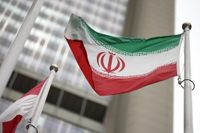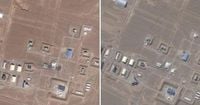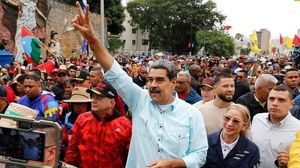Satellite images released on September 24, 2025, have revealed that Iran is actively rebuilding missile-production facilities that were heavily damaged by Israeli airstrikes during the fierce 12-day conflict in June. Yet, despite the visible flurry of construction at sites like Parchin and Shahroud, one essential element for Iran’s missile ambitions remains conspicuously absent: the massive planetary mixers required to manufacture solid fuel for ballistic missiles. The Associated Press, after analyzing the images from Planet Labs PBC, reported that while Iran’s determination to restore its missile capabilities is clear, the absence of these mixers could stall any immediate return to full-scale missile production.
For the Islamic Republic, the stakes couldn’t be higher. After the June war, which not only decimated large portions of Iran’s missile infrastructure but also crippled its air defense systems, Tehran’s missile arsenal stands as one of its few remaining deterrents. According to AP, the urgency is palpable; the satellite images show rapid reconstruction of mixing buildings at both the Parchin and Shahroud sites, a testament to the strategic priority Iran places on this program. Yet, as missile expert Sam Lair from the James Martin Center for Nonproliferation Studies noted, "If they're able to reacquire some key things like planetary mixers, then that infrastructure is still there and ready to get rolling again."
But what exactly are these planetary mixers, and why are they so crucial? These industrial machines, with blades that rotate around a central axis like orbiting planets, are indispensable for mixing the solid fuel that powers modern ballistic missiles. Without them, Iran’s missile program faces a bottleneck: it can repair buildings and restore infrastructure, but it cannot resume large-scale missile production. As Carl Parkin, another analyst from the James Martin Center, put it, "Israel's targeting indicates that they believed mixing was a bottleneck in Iran's missile production. If Iran is able to overcome their mixing limitations, they'll have all the casting capacity that they need to start producing at high volumes again."
The urgency is compounded by geopolitical pressures. As reported by AP and The Express, Iran is bracing for the possible reimposition of United Nations sanctions later this month—a move triggered by European powers invoking the so-called "snapback mechanism" in August. France, Germany, and the United Kingdom gave Tehran a 30-day window, ending September 28, to resume direct talks with the United States over its nuclear program, allow UN inspectors access to its facilities, and account for over 880 pounds of highly enriched uranium. If Iran fails to comply, the sanctions will snap back into place, severely restricting its ability to obtain the mixers and other missile-related technology.
With time running short, Iran appears to be hedging its bets. Missile experts told AP that Tehran is likely seeking to acquire planetary mixers from China, a country that has previously supplied Iran with missile fuel ingredients and other sensitive components. The Chinese Foreign Ministry, when asked by AP about its role, stated that Beijing is "willing to continue leveraging its influence to contribute to peace and stability in the Middle East," while reiterating its support for Iran’s sovereignty and security. Still, China’s stance is nuanced—deeply concerned about "the continued escalation of tensions in the Middle East," but unwilling to confirm or deny any direct assistance to Iran’s missile program.
The relationship between Iran and China is under close scrutiny, especially after Iran’s president and military officials visited Beijing earlier this month for China’s Victory Day parade. While neither side has provided details on the substance of their discussions, U.S. officials and independent analysts suspect that Iran is quietly lobbying for the mixers and possibly other advanced missile components. As Can Kasapoğlu, a senior fellow at the Hudson Institute, observed in a recent analysis, "If Iran uses its relationship with China to bolster its disruptive military capabilities, the 12-day war could be a mere speed bump for the Iranian regime, rather than a decisive defeat."
The consequences of Iran’s missile ambitions are not confined to its own borders. During the June conflict, Iran launched 574 ballistic missiles at Israel, according to the Washington-based Jewish Institute for National Security of America. In the months leading up to the war, Tehran fired an additional 330 missiles in two separate exchanges. The Israeli military, which did not respond to AP’s questions about its targeting strategy, had previously estimated Iran’s missile arsenal at around 2,500—meaning that over a third of its missiles were expended during these hostilities. Before the war, Iran was reportedly capable of producing more than 200 solid-fuel missiles per month, a rate that alarmed Israel and prompted its focused strikes on mixing facilities.
Iran’s leadership is unapologetic about the country’s military priorities. On August 22, Iran’s defense minister, Gen. Aziz Nasirzadeh, declared, "The 12-day war with Israel has altered some of our priorities. We are now focused on producing military equipment with higher precision and greater operational capabilities." Meanwhile, President Masoud Pezeshkian, addressing the United Nations General Assembly on September 24, blamed both Israel and the United States for "dealing a grievous blow" to peace negotiations by attacking Iranian nuclear sites. "You all bore witness that this past June, my country was subjected to a savage aggression and flagrant contravention of the most elementary principles of international law," Pezeshkian told world leaders.
Yet, prospects for diplomacy appear bleak. Iran’s Supreme Leader Ayatollah Ali Khamenei, speaking a day earlier, flatly rejected any nuclear talks with the United States. "The US has announced the results of the talks in advance. The result is the closure of nuclear activities and enrichment. This is not a negotiation," he said. This hardline stance stands in stark contrast to the European offer to extend the sanctions deadline if Iran resumes talks, allows UN inspectors access, and addresses concerns over its stockpile of enriched uranium.
Further complicating matters, Iran’s missile program is not just about deterrence—it’s about survival, at least in the eyes of Tehran’s leadership. After the war, with much of its air defense network in ruins, missiles remain one of the few tools Iran can wield to project power and deter adversaries. As Sam Lair, the analyst, bluntly stated, "They are clearly very invested in their missile program, and I don't think that they're going to negotiate it away, ever."
Meanwhile, the risks of mishap are real. In April, a massive explosion at an Iranian port killed at least 70 people, an incident widely believed to have been caused by chemicals used in missile fuel production. The tragedy occurred even as Iranian diplomats were meeting with Americans in Oman to discuss the nuclear program. Just days later, the U.S. State Department sanctioned Chinese firms accused of supplying missile propellant ingredients to Iran—a sign of Washington’s determination to choke off Tehran’s military ambitions.
As the September 28 sanctions deadline approaches, the world watches closely. Iran’s rebuilding efforts underscore both its resilience and its vulnerability. With the mixers still missing, Tehran’s missile program stands at a crossroads—caught between international pressure, technological challenges, and the unyielding drive to restore its deterrent power. The next chapter, it seems, will be written not just in the skies over Tehran, but in the diplomatic backrooms of Beijing, Washington, and Brussels.





